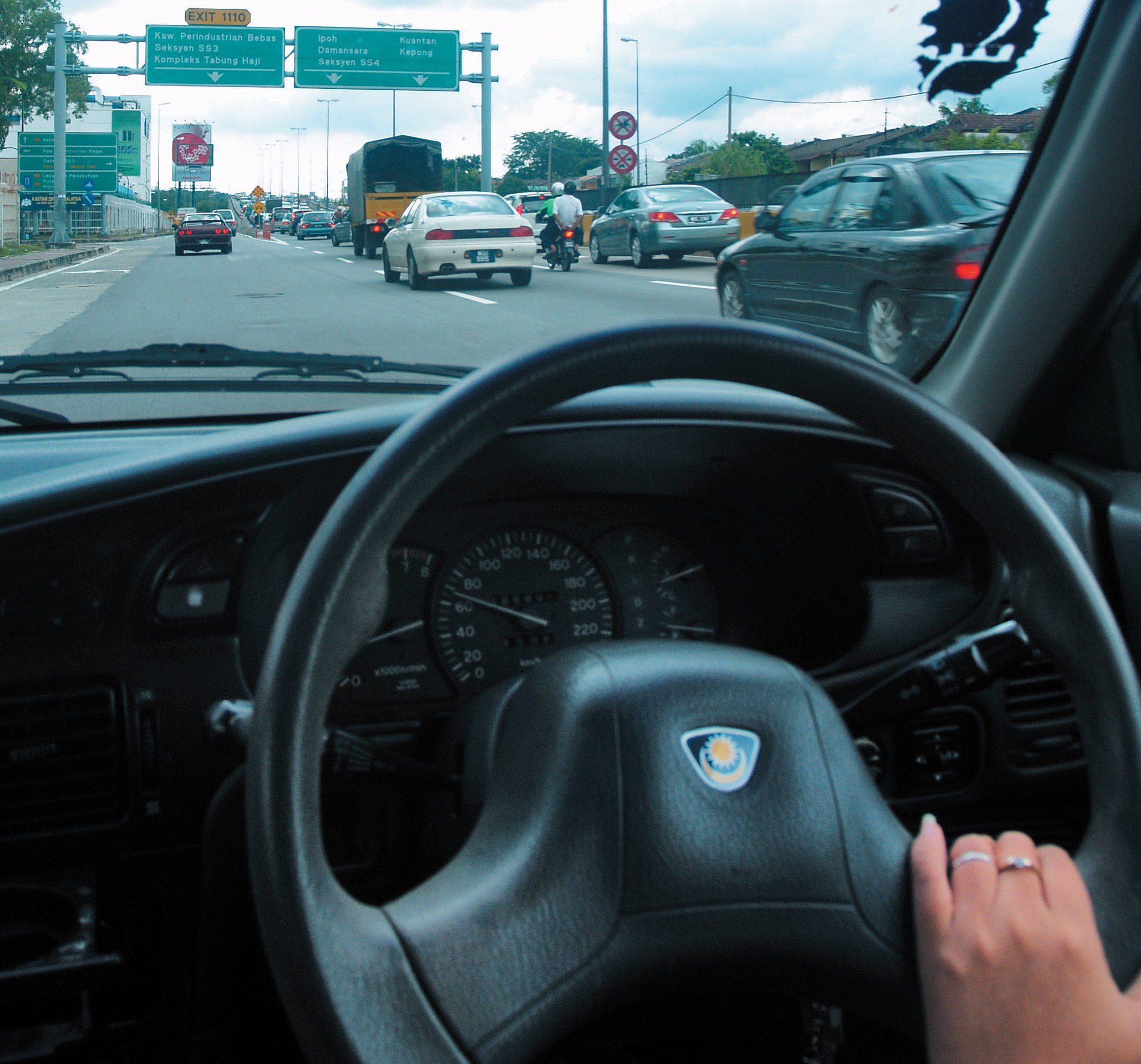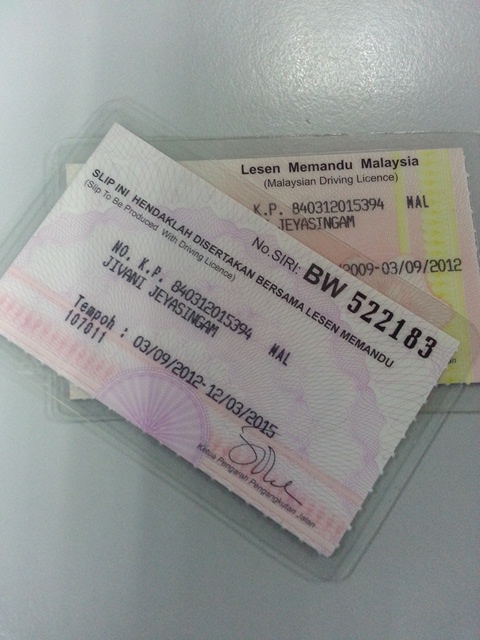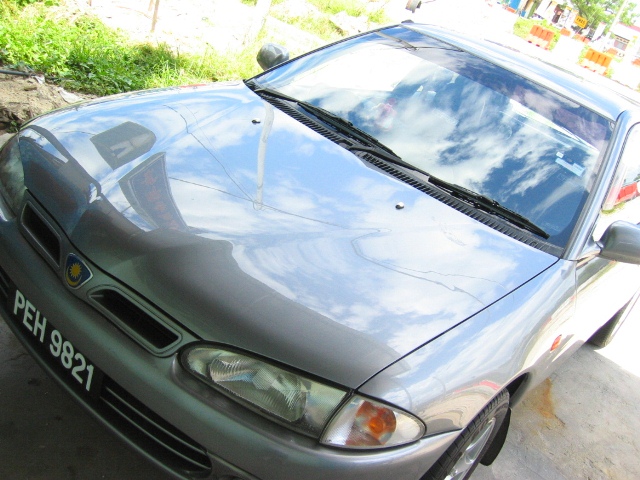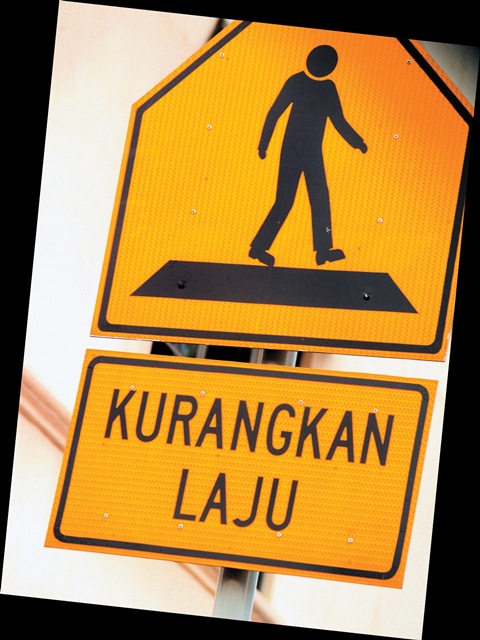
Before jumping into the fray on Malaysia’s highways and byways, it’s worth brushing up on the rules and regulations governing auto purchases or imports, and being licenced and driving in the country.
Like any other country, there are certain rules and regulations to follow when driving on Malaysian roads. Here are the general driving regulations, as well as some helpful tips that you need to know before you hit the road:
1. Driving License

You can drive in Malaysia with an international driver’s licence for up to 90 days only, and afterwards, you need to apply for a Malaysian license, however, drivers from certain countries such as Singapore, Germany, Australia, and Switzerland can use their foreign driving licence for the first three months then convert their licence for class D car licence and class B2/B motorcycle driving licence.
Correction:
According to Section 28 of the Road Transport Act 1987, “a driving license issued under the corresponding provisions of any law in force in any State which is a party to a treaty to which Malaysia is also a party and purporting to recognize domestic driving licenses issued by the contracting countries shall, so long as the license remains in force in that State, be deemed to be a driving license granted under this Part.”
“The holder of a foreign country’s driving license can drive in this country as long as the foreign domestic driving license is still valid, and is accompanied by a translation in English or Malay (where the license is in a language other than English or Malay), which is confirmed by the embassy of the country of origin in Malaysia, or by the authority issuing the driving license concerned.”
“In this regard, a foreign citizen is not required to hold a Malaysian driver’s license to drive in Malaysia.”
“In addition, foreign nationals who want to drive in this country also have the option to use an International Driving Permit (International Driving Permit-IDP) issued by the country concerned before entering Malaysia.”
Source: Official Portal of Road Transport Department Malaysia
See Also: 5 Things You Should Know About Driving in Malaysia
The required documents for conversion are your passport, your visa which is valid for no less than three months, your valid foreign driving licence, a translation letter of your driving licence (if it’s not in English), endorsement from embassy of country of origin or endorsement from the licensing authority (embassy means the embassy of the licence ‘s country origin located in Malaysia or country nearest to Malaysia), an colour ID photo of you (25mm by 35 mm), a completed Form JPJ L1, and any other additional documents if needed. You will be charged RM20.00 for the conversion process and should take about no more than a day. However, it is best to check with your own embassy about the regulations if you are not sure. You may also visit www.jpj.gov.my/en.
If your overseas licence is not valid in Malaysia, or you wish to learn to drive (you have to be 17 and over to start driving), you will have to take a driving test. Before taking the test, you have to attend an approved driving school. A list of driving schools can be found at www.drivinginstitute.com.my. After registering yourself at a school, you will be given a book with questions and answers about driving which covers all the rules in Malaysia. This must be memorized, as you will be tested and must correctly answer at least 42 of the 50 questions to pass in order to start your practical lessons. On top of that, you must complete a fivehour road safety course, which is conducted in Malay (most teachers are willing to speak some English to help explain), and you will also have to attend a three-hour basic car maintenance course which covers things like changing a tyre, checking oil, battery and water levels, topping up, and so on. Once you pass the written test, you will start your driving lessons. Once you feel ready (and presumably with your instructor’s blessing), you can take the proper driving test which can be arranged quickly as it is only a practical exam and you also have to take the test in the driving school’s car. When you pass the test, you will receive a “P” (provisional) sticker which must be displayed outside of any car you drive and must drive with it for at least two years before obtaining the Competence Driving Licence (CDL).
2. Import Duties

Most cars in Malaysia are locally produced because of the high import duties that are placed on importing foreign cars which makes them very expensive. The primary reason for this is to protect the local automakers, Proton and Perodua, in which the car industry is a major factor of the Malaysian economy. Cars that are imported in completely built-up form (CBU) are taxed at a higher rate than those that are locally assembled – completely knocked down (CKD). Duties are applied according to the size of the car engine (cubic capacity), so the bigger the car’s engine and cubic capacity, the higher the duty. Lower duties apply to 4-wheel drives, vans, and multi-purpose vehicles. It is also worth noting that the annual road tax depends on the size of the engine and a car with an engine over 2500cc will cost a lot more to renew each year.
Importing a car into Malaysia is very costly and the import duties can cost more than the car’s value, but if you decide to bring your second-hand car then you will be taxed based on the customs valuation of your car using their own methodology and not necessarily on your declared value. Furthermore, this requires retrieving multiple proper permits and a fair degree of bureaucracy, so you can see that we strongly recommend not bringing your vehicle in unless you’re very attached to it.
To import a car, you must meet the needed conditions which is having a valid work permit, importing of the vehicle must be of personal use only, and export the car out of Malaysia when business contract ends. Moreover, an application must be completed to the Ministry of International Trade and Industry for an Approved Permit and you will need to hold onto this as this is your importing licence.
However, if you are moving here under Malaysia My Second Home (MM2H) visa, you are entitled to one tax-free car. You can either bring your own car into Malaysia or purchase a locally assembled car free of taxes. The MM2H programme can cut down the burden of excise duty and sales tax, which can result in considerable savings. If you choose to bring your car, you must do so within six months of your visa being approved. Of course, since Malaysians drive on the left-hand side of the road, your car will need to be a righthand drive car (the steering wheel on the right). If you want to buy a car in Malaysia tax-free, you’ll need to do your purchase within one year of the approval of your visa. In both cases, you have to secure a formal approval first from the Ministry of Finance. For more information about the MM2H taxfree car privilege, visit www.mm2h.gov.my.
Other General Road Rules

Most of the road signs should be similar with other road signs from other countries so despite the infrequent use of Malay words, it shouldn’t be very difficult to understand what the signs mean to foreigners.
Generally, the speed limit in town will be between 50-70 kph but on the highway, it’s 90-110 kph. Over the past decade, the police have installed a number of cameras to spot anyone going over the speed limit, an exercise aimed at reducing the number of road accidents. You might encounter a few of them near traffic lights as they are usually noticeable but the ones on the highway are more invisible as they are hidden under bridges. However, these cameras are typically signed ahead of their actual location, so do be aware.
The Road Transport Department is responsible for the application and collection of annual road tax. The road tax can also be paid online or at any Pos Malaysia offices. Drivers will need their JPJ registration card for their car in order to pay for the road tax. Insurance for the year must be arranged and paid prior to renewing road tax; this is updated automatically in the JPJ system by your insurance company. After validating your road tax, you must clearly display the tag that has been given to you on the front windscreen when using your car.
Driving under the influence of alcohol is prohibited, and 0.8 grams per litre or over is considered to be under the influence of alcohol and this can result to a fine not exceeding RM2,000 or to an imprisonment for a term not exceeding six months and in the case of second or multiple conviction, a fine not exceeding RM4,000 and/or imprisonment for not more than a year. There is also a possibility that you may lose your licence for at least 12 months. Needless to say, this is all best avoided by not drinking and driving. A cab fare home is a cheap alternative to the dangers of being on the road under the influence and risking fines and imprisonment, along with your life and the lives of those on the road with you.
Homepage Highlight Photo credit: lynac / Foter / CC BY-NC
Source: The Expat Magazine August 2014
Read more:
- 5 Things You Should Know About Driving in Malaysia
- An Expat’s Road Trip to the East Coast of Malaysia
- Leisure in Laid-back Luang Prabang
What are your thoughts on this article? Let us know by commenting below.No registration needed.
"ExpatGo welcomes and encourages comments, input, and divergent opinions. However, we kindly request that you use suitable language in your comments, and refrain from any sort of personal attack, hate speech, or disparaging rhetoric. Comments not in line with this are subject to removal from the site. "




















